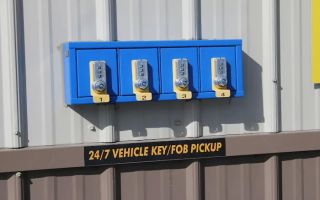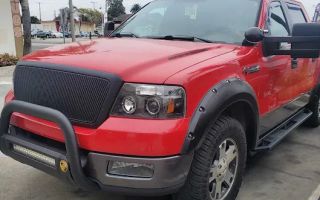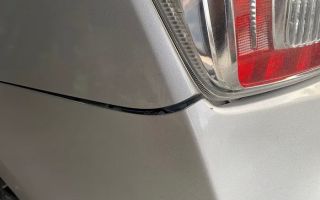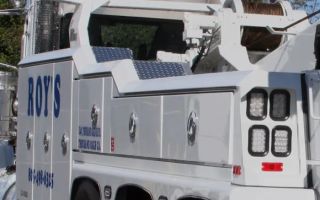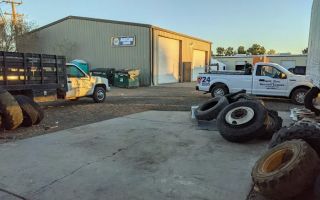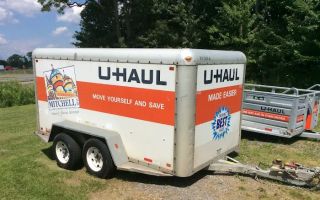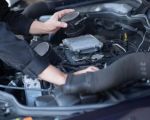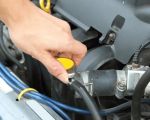- 1. Prepare Your Vehicle for Winter Driving
- 2. Tips for Safe Driving in Heavy Snowfall
- 3. Handling Emergency Situations in Snow
- 4. Maintaining Your Vehicle During Winter
- 5. When to Call for Help from Rescue & Towing
1. Prepare Your Vehicle for Winter Driving
Driving in heavy snowfall can be challenging, but with the right preparation, you can reduce your risk of accidents and ensure your vehicle handles well in winter conditions. Before hitting the road, make sure your car is ready for the snow:
- Check Your Tires: Snow tires or all-weather tires provide better traction in slippery conditions. Ensure that your tires have enough tread and are properly inflated to avoid slipping on icy surfaces.
- Inspect Your Battery: Cold temperatures can affect battery performance. Have your battery checked and ensure it is in good condition to avoid unexpected breakdowns in winter.
- Fill Up on Anti-Freeze: Make sure your vehicle's coolant is topped off with the correct amount of anti-freeze to prevent your engine from freezing during cold weather.
- Check Your Windshield Wipers: Clear visibility is critical when driving in heavy snow. Ensure your wipers are in good condition, and use winter-specific windshield washer fluid to prevent it from freezing.
- Keep an Emergency Kit: Include blankets, food, water, and a flashlight in your emergency kit. It's also helpful to have a small shovel, ice scraper, and sand or cat litter in case you get stuck.
2. Tips for Safe Driving in Heavy Snowfall
Once you're on the road, it’s important to adjust your driving habits to match the snowy conditions. Here are some key tips for driving safely in heavy snowfall:
- Drive Slowly: Snow and ice can make roads slippery, so reduce your speed and increase your following distance. Give yourself extra time to react to potential hazards.
- Avoid Sudden Movements: Abrupt braking, acceleration, or steering can cause your car to lose traction. Make all movements slowly and smoothly to maintain control.
- Use Your Low Beams: In heavy snow, use your low beams instead of high beams. High beams can cause snow to reflect, making visibility worse.
- Keep a Safe Distance: Maintain a longer distance than usual between you and the vehicle in front of you. This gives you extra space to stop if the car in front of you suddenly brakes or slides.
- Brake Gently: When braking on snow or ice, do so gently to avoid skidding. If your vehicle has anti-lock brakes (ABS), apply steady pressure on the brake pedal. If your vehicle doesn't have ABS, pump the brakes lightly to prevent locking up.
- Avoid Cruise Control: Cruise control can be dangerous in snowy conditions as it may cause your car to maintain a constant speed, which is risky if the road suddenly becomes slick.
3. Handling Emergency Situations in Snow
Even the most cautious drivers can find themselves in difficult situations during heavy snow. Here’s how to handle common winter driving emergencies:
- If You Get Stuck: If your car gets stuck in snow, avoid spinning your tires, as this can make the situation worse. Instead, clear snow from around the tires, use sand or cat litter for traction, and gently rock the car back and forth to free it.
- If You Lose Control: If you start to skid, remain calm and turn your steering wheel gently in the direction you want to go. Avoid slamming on the brakes, as this can make the skid worse.
- If You Need to Stop: If you must stop your vehicle in the snow, try to do so in a safe area with good visibility. Turn on your hazard lights and stay inside the vehicle until help arrives, especially if you're stranded in a storm.
4. Maintaining Your Vehicle During Winter
Regular maintenance is essential for safe driving in heavy snowfall. During the winter months, your vehicle requires more attention to ensure it continues to perform well:
- Keep Your Gas Tank Full: Keep your gas tank at least half full during winter. This prevents condensation from forming in the tank and ensures your vehicle has enough fuel in case of an emergency.
- Regular Oil Changes: Cold temperatures can thicken engine oil, so make sure your vehicle's oil is changed regularly, and consider using winter-grade oil if necessary.
- Check Brake Fluid and Belts: Ensure that your brake fluid levels are topped off and that belts are in good condition. These components are essential for your car’s performance in harsh weather.
5. When to Call for Help from Rescue & Towing
Even with careful preparation, winter driving can sometimes lead to unexpected problems. If you find yourself in need of assistance, don’t hesitate to call for professional help. At Rescue & Towing, we offer reliable towing and roadside assistance services during the winter months to ensure you stay safe on the road.
If you get stuck in a snowstorm, experience a breakdown, or simply need help with a flat tire, our team is ready to provide prompt and efficient service. We understand the challenges of winter driving and are here to help you get back on track quickly.



